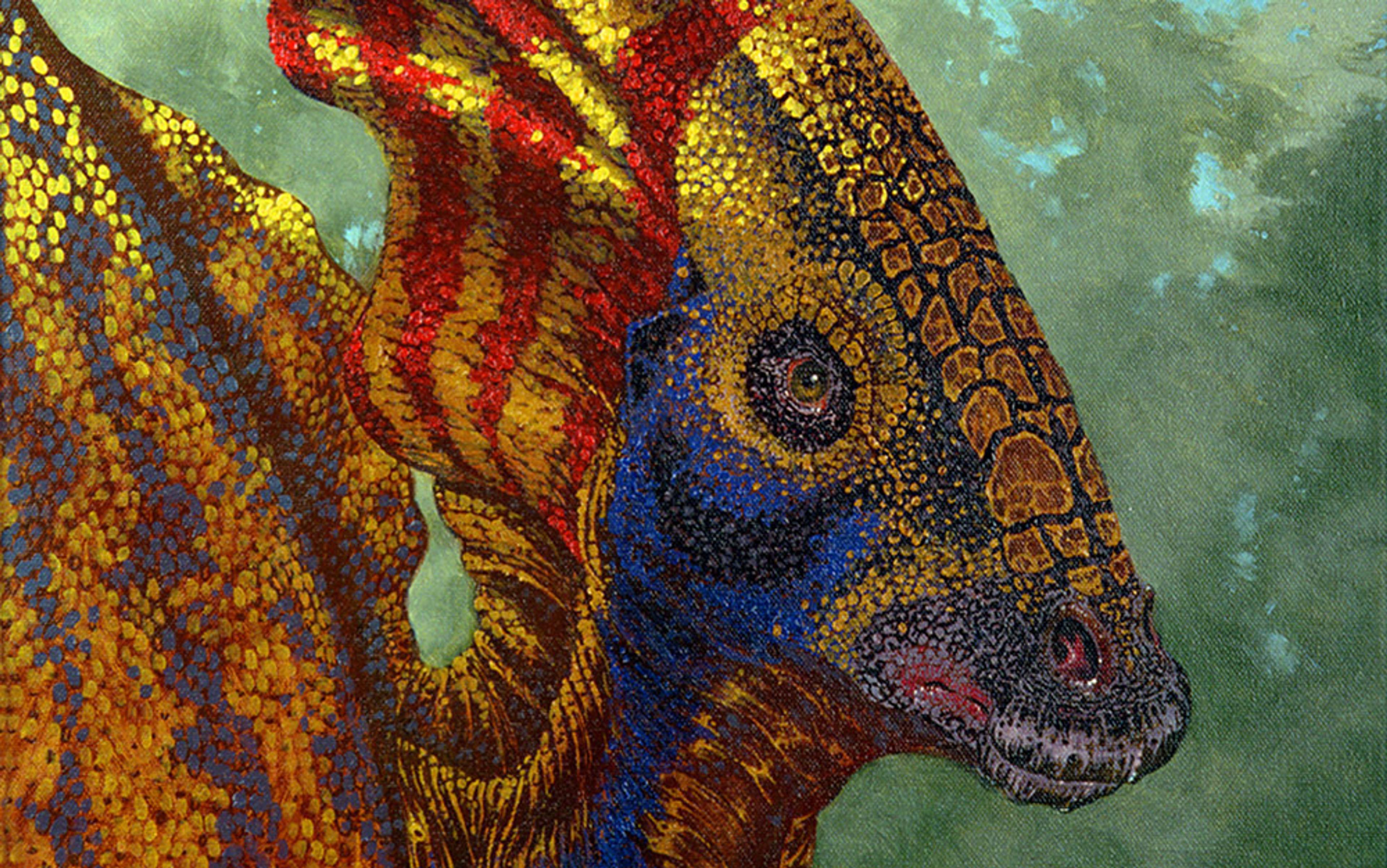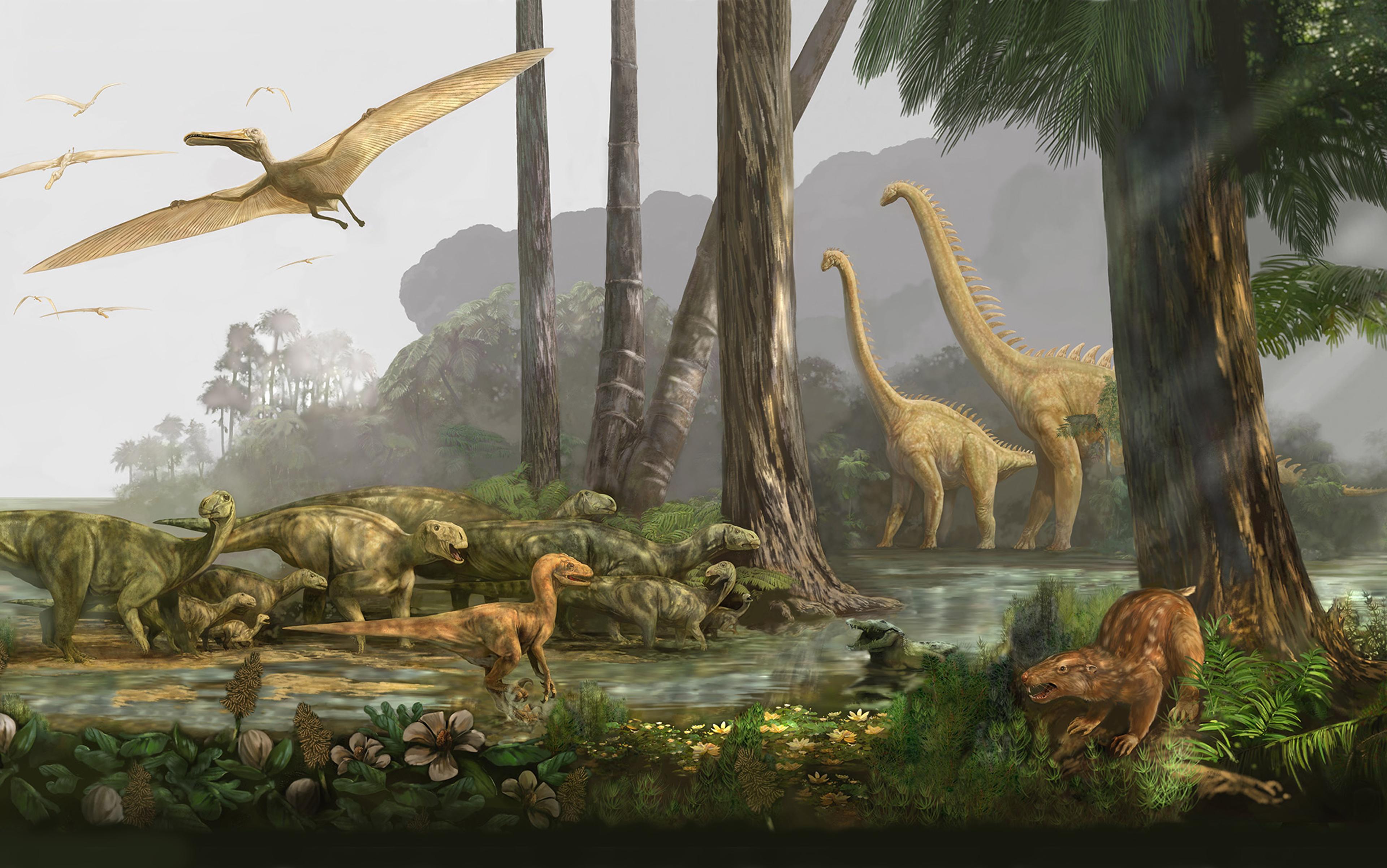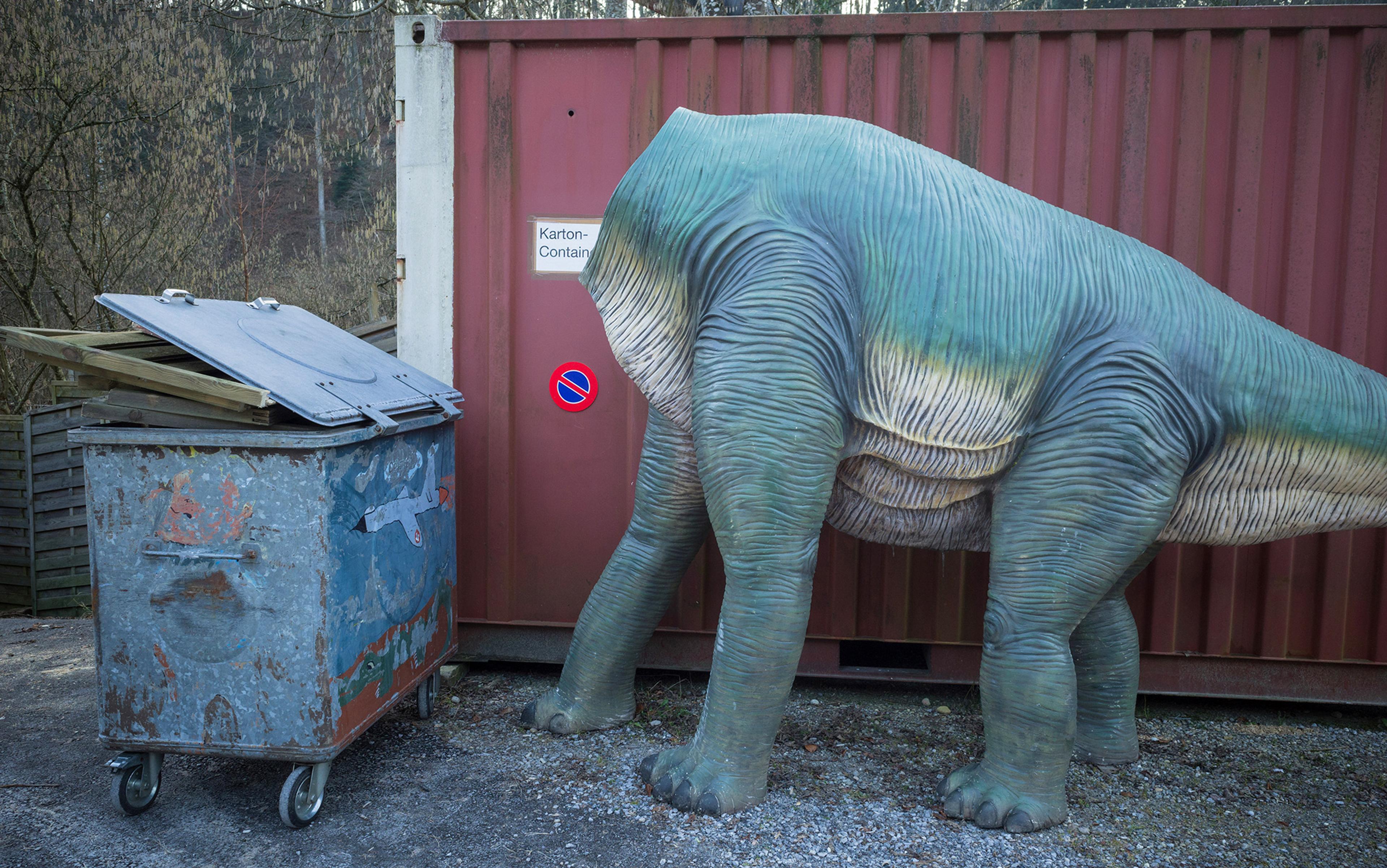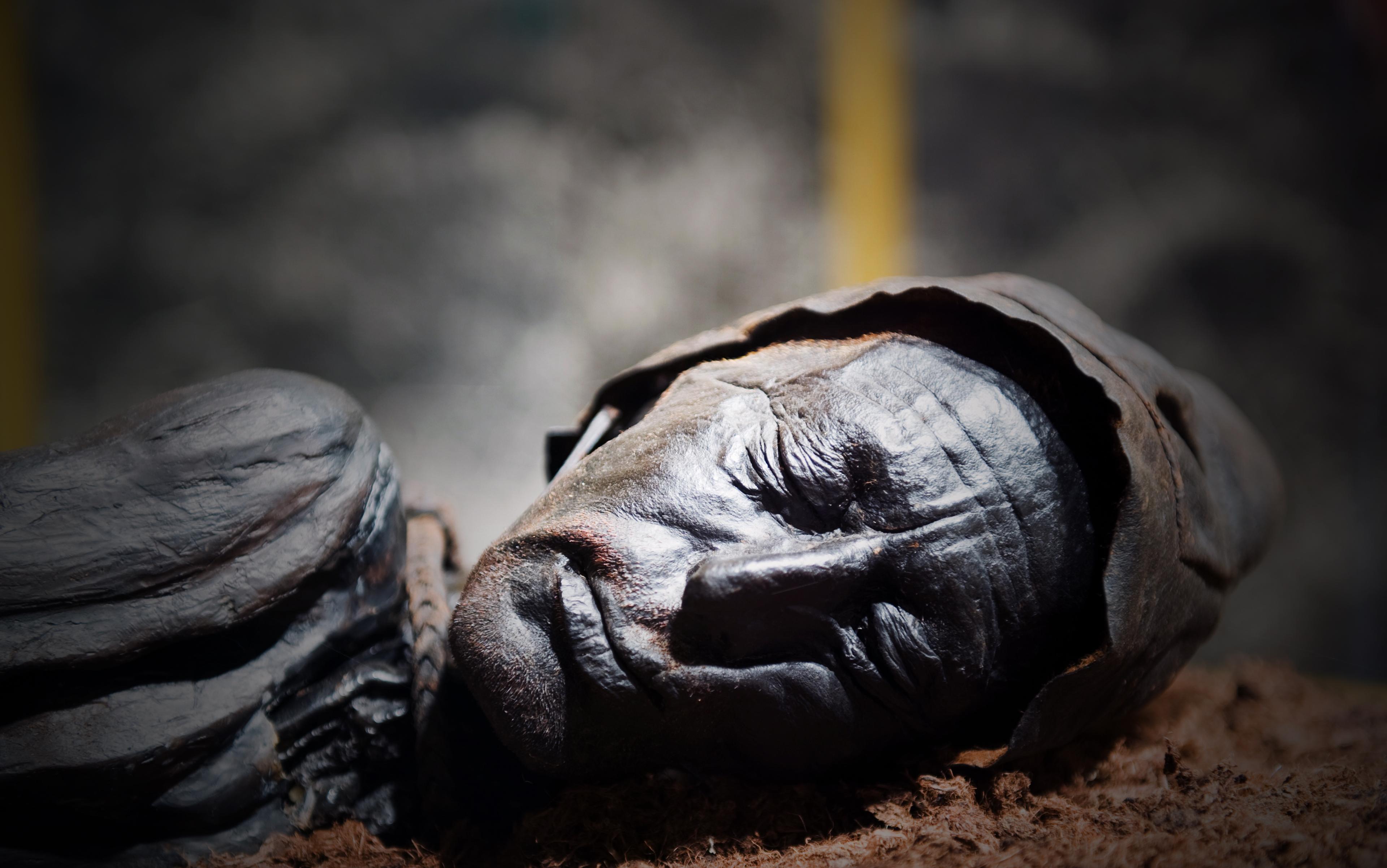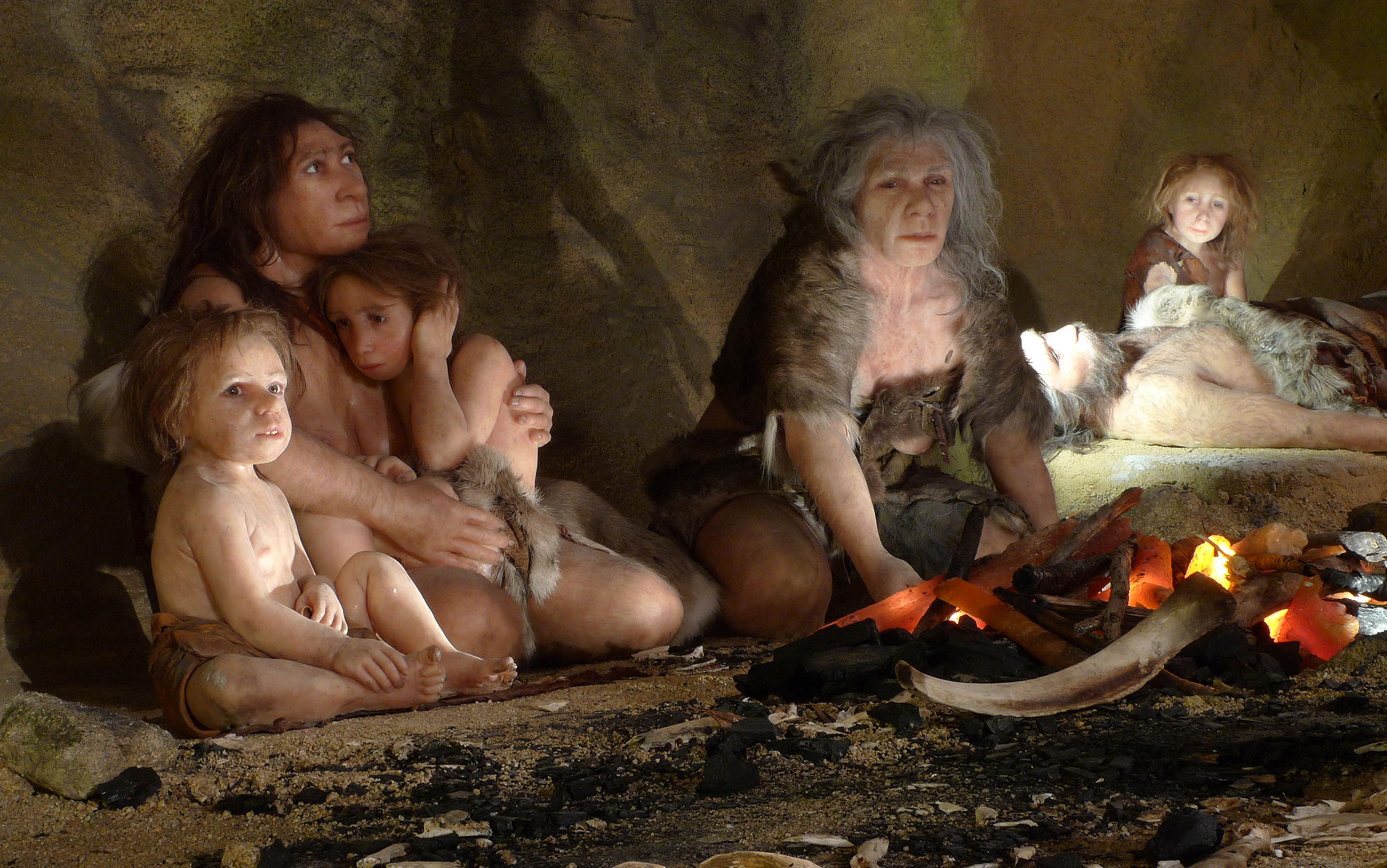In late 2016, a team of palaeontologists, led by Julia Clarke from the University of Texas at Austin, confirmed they had discovered the oldest known fossil of a bird’s voice box, known as a syrinx. It was found in the remains of an extinct Antarctic bird named Vegavis, which died at least 66 million years ago and lived alongside the dinosaurs. The fact that the syrinx was not more widespread at the time suggests that the bird’s voice box arrived relatively late in the evolutionary game, some time after flight, the development of continuous breathing and the use of colourful feathers for sexual display.
The syrinx was made up of tough cartilage, and in this case was unusually well-preserved. ‘We got exceptionally lucky,’ says Clarke. But the specimen was still not enough to identify the bird’s call. Bird sounds are complex, shaped by factors including the folds of tissue that cover the cartilage and the structure of the rest of the vocal tract. So the team compared the fossil to 12 species of living birds, and one species of ancient waterfowl, in order to build up a three-dimensional model of the creature’s acoustic anatomy. The results suggested Vegavis might have made a sound akin to either a duck or a goose. ‘Whether it is a quacker or a honker, we don’t actually have the data at this point to say,’ adds Clarke.
Fossils are lifeless and yet full of life – packed with not only the shapes and forms of the creatures they came from, but also with their habits, movements and more subtle and surprising traces of how ancient animals perceived the world. Take the dinosaurs, those pop-icons of palaeontology. Fossilised footprints reveal that they travelled in herds, hunted in packs or nurtured offspring that stuck close to their mother’s footsteps. Pigment-bearing cells preserved in hair follicles give us a glimpse of the colours of dinosaurs’ coats (blacks, reddish-browns), and we know that they could be scaled or feathered. Even the fearsome T Rex was fluffy. Now, through the unyielding materiality of fossils, scientists over the past two decades have come to a much richer understanding of the most elusive and atmospheric feature of the primordial world: its soundscape.
Prior to Vegavis, the family of duck-billed dinosaurs known as Parasaurolophus had been at the centre of the paleo-acoustic conversation. They’re herbivorous creatures named for the shape of their mouths, but better known for the large, bony crests arching over the back of their heads like a single blunted horn. Most creatures, including humans, vocalise using softer organs and membranes that tend to decompose instead of entering into the fossil record. Parasaurolophus is a rarity in this regard, as no other animal has been known to dedicate so much hard, fossil-friendly tissue to making noise.
In 1931, Carl Wiman, a palaeontologist from Uppsala University in Sweden, identified the first specimen of the species Parasaurolophus tubicen, also called the ‘trumpeter’. It lived 75 million years ago and had been unearthed on a dig in New Mexico, its skull broken, twisted and heavily eroded along one side. Only five trumpeter skulls have ever been found.
Sound hails from structure: objects produce noises at higher or lower pitches depending on the natural rate at which they vibrate when excited by air and other movement. From where the fossil had cracked and split, Wiman could see that there would have been a hollow inside when the creature was alive. The crest enclosed a pair of tubes that extended from the nostrils and up into the crest before looping back down into the throat. To Wiman, it looked like a crumhorn – a long, curved woodwind instrument that translates as ‘bent horn’ in German. He proposed that the hollow tubes were used to produce sound and amplify the dinosaur’s voice across large distances and through thick forests.
For decades, the fossil remained silent. Other scientists came up with their own outlandish suggestions about the purpose of the crest: that it was a snorkel, a tool to flick away foliage, a radiator to get rid of excess heat, or a way of enhancing the creature’s sense of smell. In the 1980s, David B Weishampel of Johns Hopkins University built plastic models to show how a dinosaur’s crest could emit powerful, low-pitched noises, but the field needed further proof. Then, on 17 August 1995, a second P tubicen skull was unearthed near Farmington in New Mexico, just a few miles away from the burial site of the original. This one was in immaculate condition.
‘You get these weird booming sounds. It sent chills up and down my spine’
Tom Williamson, then the curator of palaeontology at New Mexico Museum of Natural History and Science, was part of the dig team. He decided to test the hypothesis that the crest could be used to make sound. He took the specimen to a local hospital so it could be imaged with a CT scanner – a machine shaped like a big donut, in which a human patient is passed through a central hole while being bombarded with X-rays. In this case, the machine scanned the P tubicen skull in 3mm slices, and stacked the visual layers on top of one another to create a three-dimensional representation of the creature’s crest.
With the help of Carl Diegert, a computer scientist, Williamson simulated the frequencies of noise that P tubicen could have produced. The men had to infer the location and structure of several missing parts, such as the soft tissues of the nose and throat. But eventually they settled on a note of around 30Hz, a rich bass at the bottom of the range of human hearing, with some unexpected peaks of intensity caused by the internal intricacy of the creature’s airways. ‘You get these weird booming sounds,’ Williamson told me. ‘It sent chills up and down my spine.’ This noise is now thought to have helped P tubicen form complex social groups, via its enhanced capacity to communicate with and identify other members of its species, including males and females.
Animal calls don’t always depend on a voice box or extravagant headgear. Insects stridulate, which means they rub two body parts together to make a sound. In bush crickets, for example, a row of teeth at the base of one of their wings is rubbed over a plectrum-like structure on the other. Like rubbing your finger over a comb, the tiny teeth are bent and released one after another; tooth by tooth, the wing vibrates back and forth sending a series of ripples through the air in the form of sound.
In 2012, Chinese palaeontologists discovered the fossilised wings of an ancient bush cricket near Daohugou village in Inner Mongolia, and regenerated its chirp. The song sounded like a whistle, ascending in pitch from start to finish. ‘This might be the call that was serenading the dinosaurs,’ says Fernando Montealegre-Zapata, the expert from Lincoln University in the UK who was behind the sonic reconstruction. He specialises in the biomechanics of insect hearing and sound. In previous research, he showed that the length of a bush cricket’s line of teeth is closely married to the pitch and tenor of its song. Larger rows are associated with low frequencies, while smaller rows will be associated with animals producing higher, usually ultrasonic, frequencies.
The insect had its own acoustic niche, like a private radio channel that could attract mates but avoid detection by large predators
Montealegre-Zapata measured the length of the Chinese cricket’s ‘teeth’ using a set of high-resolution images, sent via email. Each was 9.34mm long, a lengthy appendage for a male bush cricket. When compared with his modern datasets, this length correlated with a sound of 6.4kHz – high-pitched to our ears, but nearly as low as bush crickets go. And, like many species alive today, the spacing between the teeth gradually increased along the length of the file, ensuring that the ‘plectrum’ strikes them at a constant rate as one wing moved over another in an accelerating, scissor-like manner. Such constancy leads to a ‘pure’ tone – a whistle, rather than the ‘cssh-cssh-cssh-cssh’ of other, noisier crickets. In honour of its harmonic song, the species was named Archaboilus musicus.
The song of A musicus is infused with information. Its precision – 6.4kHz and nothing else – suggests that the insect occupied its own acoustic niche, like a private radio channel, in a landscape filled with a sonic spectrum of species. Most of A musicus’s living relatives now sing in ultrasonic mode, rubbing their wings over one another with such rapidity that they speak to each other at 20kHz or above, outside the realm of what our ears can hear. It’s hard to know for sure why they changed the tune, but there’s at least one compelling explanation, says Montealegre-Zapata. Higher-pitched sounds don’t travel as far, reducing the insects’ chance of being picked up by keen-eared of bats.
Evolution retunes itself. Just as species live, die and adapt over time, so do their voices. And as for crickets, so too for humans.
The Neanderthals, humans’ closest relative, spoke with the phonetic range of a young child, according to an article published in 1971 by the anthropologist and cognitive scientist Philip Lieberman, now at Brown University, and the late Edmund Crelin, an anatomist at Yale. They based this assessment on a comparison of three skulls, including the interiors of the mouth, nose and throat: an adult human’s, a child’s, and a Neanderthal skull from La Chapelle cave in France. ‘We can conclude that Man is human because he can say so,’ Lieberman and Crelin wrote.
Recent genetic evidence, however, suggests that Neanderthals had greater vocal abilities than previously thought – possibly even equal to contemporary humans. In 2007, geneticists extracted DNA samples from two Neanderthal bones discovered in El Sidrón cave in Northwest Spain. They found a version of the FOXP2 gene, which plays a crucial role in the development of human language. If this gene is broken, people can’t speak. Neanderthals, then, had the basic genetic foundation for modern speech. A typical European shares 1 to 4 per cent of his genome with that of the Neanderthals, and it’s believed that Homo sapiens interbred with Neanderthals, instead of displacing or killing them.
Our own Adam’s apple is virtually indistinguishable from that of our Neanderthal relatives. Known as the hyoid, this semi-circular bone plays a central role in moving the larynx and tongue during speech. ‘The internal geometries of bone actually reflect the way the bone is used,’ says Stephen Wroe from the University of New England in Australia, who was part of the team that used micro-CT scanning to compare Neanderthal and human hyoids in 2013. ‘Bone is a living tissue and it’s constantly remodelling – being reabsorbed, or laid down – in response to the forces that are being routinely applied to it,’ he told me. Just like the toothed combs of a bush cricket or the resonating chamber of a duck-billed dinosaur, similarity in structure echoes a similarity in function.
Palaeontologists not only long to understand the past, but to feel its textures, survey its colours, immerse themselves in the full sweep of its atmosphere. All fossils fuel the imagination, but sound carries a story. Each reconstructed noise is laden with hope, nostalgia and melancholia for a certain horizon of impossibility, beyond which scientists’ attempts to summon a sonic milieu are bound to fail. Now contemporary humans are causing another great extinction of species that share our geologic era. We should listen to their song: it might be our last, and only, chance.
